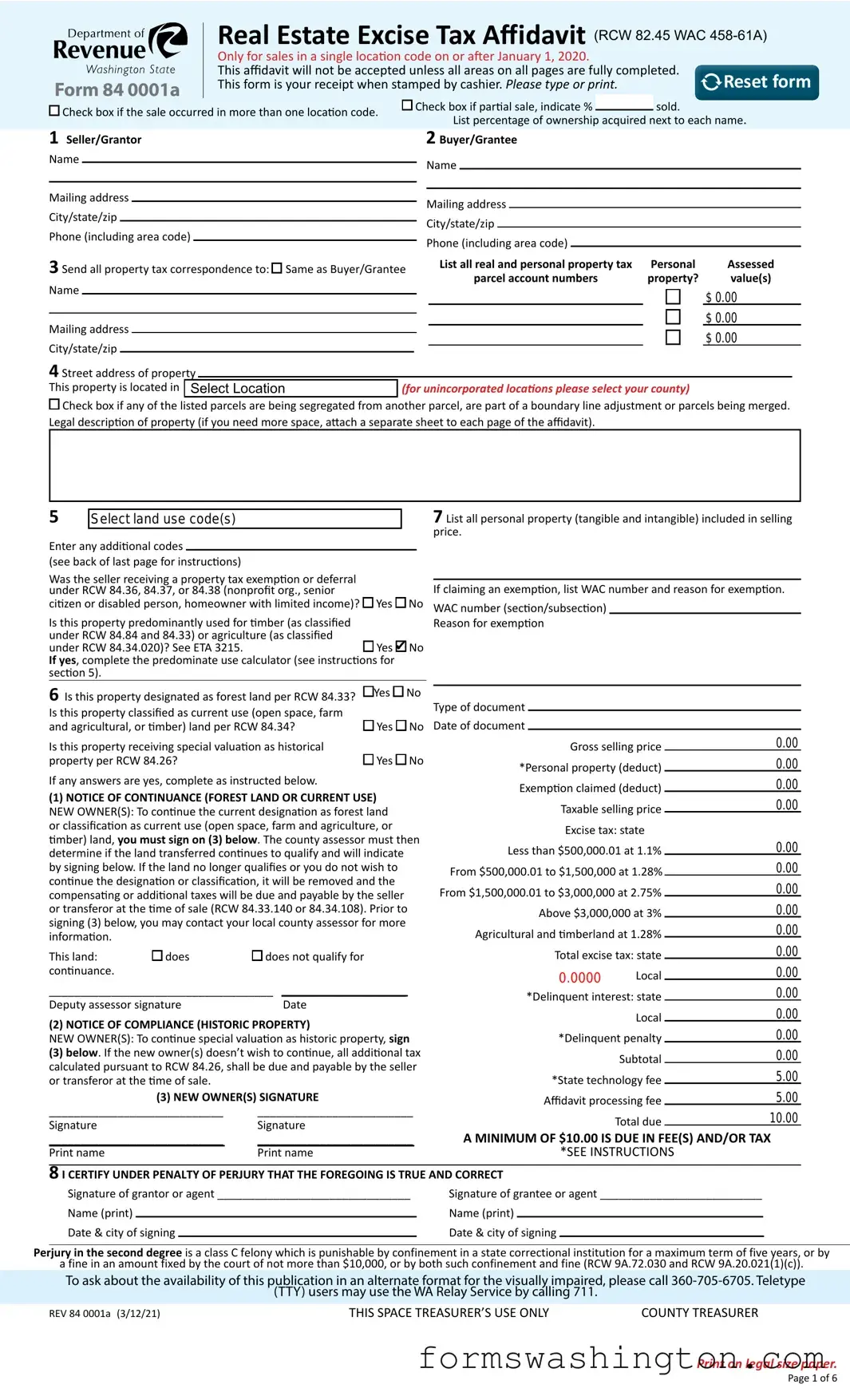The Washington Real Estate Excise Tax Affidavit form is a crucial document in the real estate transaction process, particularly for those buying or selling property within the state. This form serves multiple purposes, including the declaration of the sale price, the identification of the parties involved, and the reporting of any exemptions that may apply to the transaction. By accurately completing this affidavit, parties can ensure compliance with state tax laws and facilitate the proper assessment of the excise tax owed. The form requires detailed information about the property, such as its legal description and the type of transaction taking place, whether it’s a sale, transfer, or other disposition. Additionally, it must be filed with the county auditor at the time of recording the deed, making it an essential step in the closing process. Understanding the nuances of this affidavit can help both buyers and sellers navigate their responsibilities and avoid potential pitfalls associated with real estate transactions in Washington.
